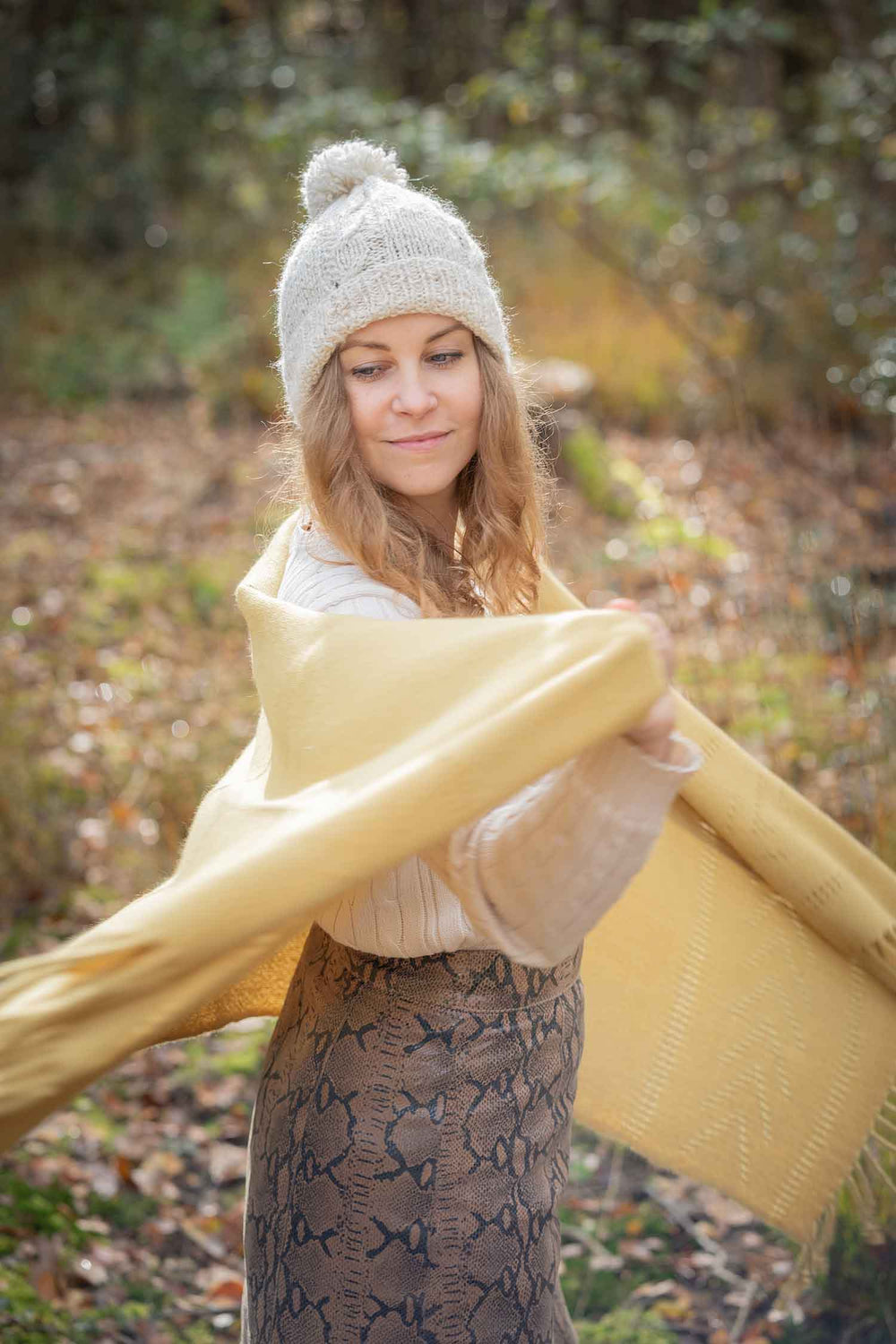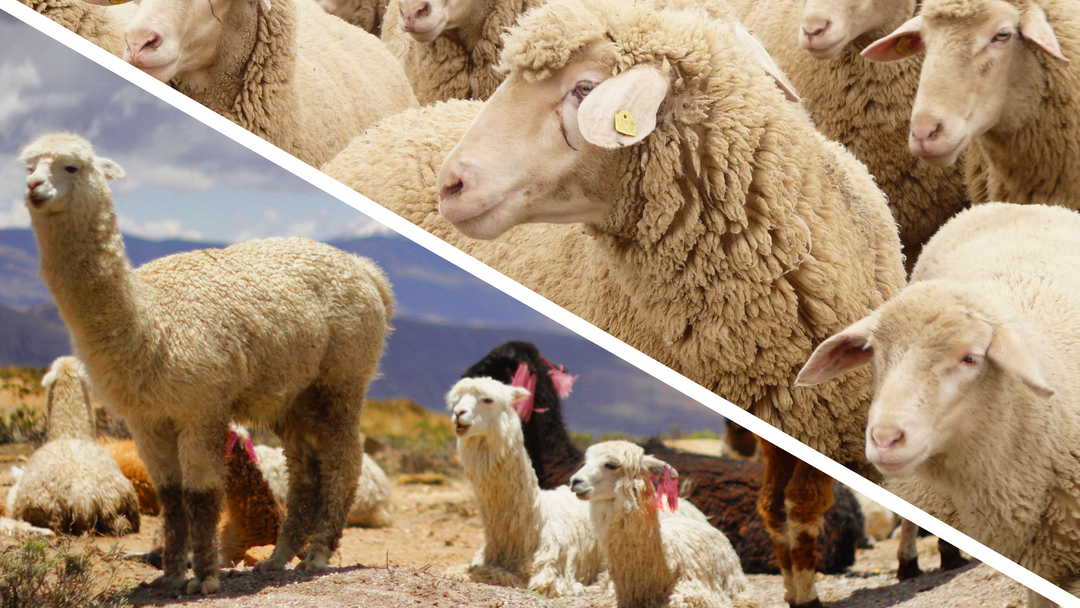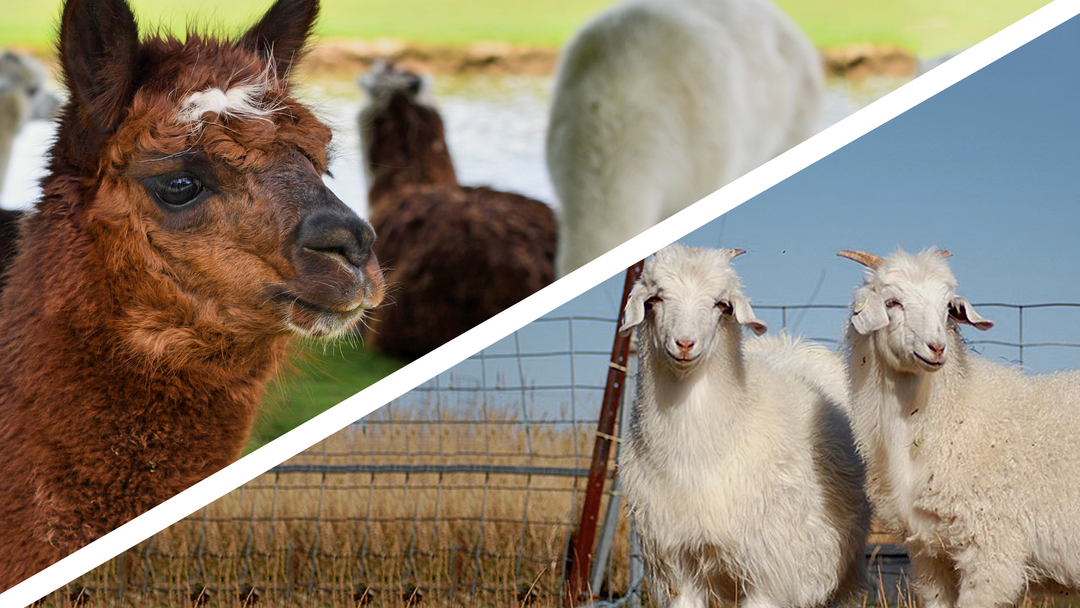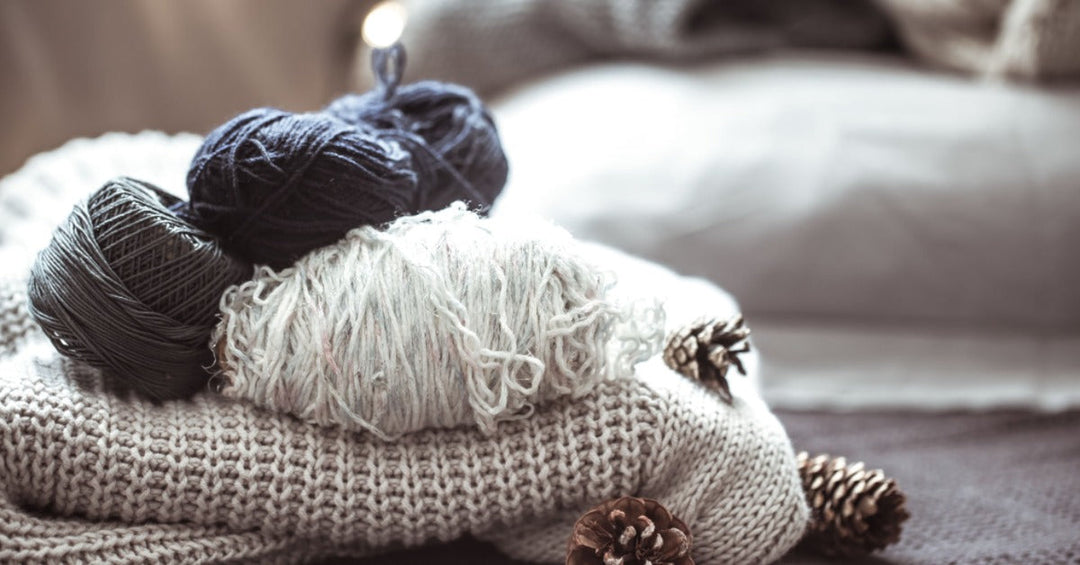Alpaca and cashmere wool are prized for clothing, but alpaca offers higher quality and durability while cashmere's quality is declining.
Alpaca and cashmere fabrics are both highly sought after for making garments such as jumpers, scarves and jackets. Both materials have their own advantages and properties, but there are some reasons why alpaca may be the better choice for your wardrobe. In this article, we will take a closer look at the differences between alpaca and cashmere and explain why alpaca is the better choice for your wardrobe.
Similarities between alpaca and cashmere wool
Alpaca and cashmere wool have some significant similarities that make them popular materials in the fashion industry. One of these similarities is their softness. Both types of wool are very soft and comfortable to wear against the skin. They are also both hypoallergenic and breathable, which makes them ideal for people with sensitive skin.
Another feature that alpaca and cashmere wool have in common is their thermal insulation. They are up to eight times warmer than sheep's wool, making them ideal for cold winter days. They are also both very light, making them ideal for use in lightweight jackets and jumpers.
Cashmere: quality, price and sustainability

Cashmere is a luxurious and noble fabric made from the wool of the cashmere goat. These animals live mainly in the mountains of Central Asia, especially in China, Mongolia and Kazakhstan. Cashmere is a particularly soft, warm and comfortable fabric that is highly prized in the fashion world. But it is not only the wearing properties that make cashmere a special material; quality, price and sustainability also play an important role. In this part, we would like to take a closer look at these aspects.
The World of Cashmere: Quality at Risk
Once upon a time, cashmere was considered a symbol of luxury and exclusivity. But unfortunately, the fame of this noble material has led to more and more producers jumping on the bandwagon and quality is suffering as a result. The production of cashmere fibres requires care and tact, but unfortunately, cuts are being made more and more frequently in order to get where they want to go faster and cheaper. For example, only a fraction of the cashmere wool produced, 0.5%, reaches the high standards of the finest fibre (Soft Gold).
If that were not enough, many producers are also increasingly mixing synthetic materials into the cashmere to reduce costs. In fact, of the 20,000 tonnes of cashmere produced annually, only 6,500 tonnes is pure cashmere.
Hopefully, there will continue to be responsible producers who value quality and allow us to enjoy cashmere in its true beauty. But unfortunately, it is becoming more and more difficult to find them every year.
Price of cashmere:
Cashmere is an expensive and high-quality fabric. The price of cashmere products depends on many factors, such as the quality of the wool, the way it is processed, etc. However, it is important to note that the price of cashmere is not necessarily an indicator of quality. There are many expensive cashmere products on the market that are made from poor quality wool or under poor working conditions. To ensure you are buying a quality cashmere product, research carefully and choose manufacturers who work with small producers who respect the product's processes.
Sustainability of cashmere:
However, there are also some negative aspects regarding the sustainability of cashmere. One of the biggest criticisms is that the animals graze on smaller and smaller areas, which does not give them the space they need to develop. This leads to many goats living in poor conditions and being under stress.
Another problem is the impact of the cashmere goats on the areas where they live, as the goats tear down the grass by eating it and their hooves damage the soil. All this has led to desertification of the areas where the largest herds of these animals are kept.
Alpaca wool: quality, price and sustainability

Alpaca wool is a valuable and elegant material obtained from alpacas. These animals live mainly in the mountains of the Andes, especially in Chile, Bolivia and Peru. Alpaca wool is a particularly soft, warm and pleasant material that is highly valued in the fashion world. However, it is not only the properties of alpaca wool that make this material special but also the quality, price and sustainability play an important role. We will now take a closer look at these aspects when it comes to alpaca wool.
Quality of alpaca wool:
Although alpaca wool has been known by mankind for thousands of years, the truth is that it has only recently appeared in the West. This has meant that this material is not as heavily exploited by producers with low standards.
Nevertheless, it is advisable to look for products from producers in the countries where these animals live naturally, as these countries have been working with excellent quality for hundreds of years.
Moreover, it is in these places where the best alpaca wool can be found, as the animals live in their natural habitat and have little contact with humans.
Unlike cashmere wool, it is easier to find products made exclusively from alpaca wool, but it is becoming increasingly difficult. Therefore, if you find a shop that sells these products, don't lose sight of it.
Price of alpaca wool:
Alpaca wool is an expensive and high-quality fabric. The price of alpaca products depends on various factors, such as the quality of the wool and the way the product was made. Unlike cashmere, the prices of alpaca products are usually directly linked to quality. The most expensive products are those made entirely from alpaca wool and by hand. However, it is important to check the manufacturers to ensure that the final product is of high quality.
Sustainability of alpaca wool:
In contrast to cashmere wool, alpaca wool is characterised above all by its sustainability. Alpacas are animals that do not pull out the grass when grazing but eat the leaves of shrubs and grasses. They need little water and feed and their hooves do not damage the soil like those of other animals.
Another plus is that it is easy to identify companies that work with wool from free-roaming alpacas, as they work directly with the Aimara artisans who have been caring for these animals for centuries.
Care of both fibres

Both alpaca wool and cashmere are good choices for warm and soft wool products that last a very long time when properly cared for. After wearing, products should be well aired before being stored to avoid unpleasant odours. It is also important to treat stains as soon as possible by treating them carefully with water and a little soap if necessary. In this way, you can ensure that the products remain in perfect condition for a long time and you can enjoy them for a long time.
Conclusion
In summary, alpaca and cashmere fabrics are both very popular for making garments such as jumpers, scarves and jackets. Both materials have their own advantages and properties, but there are a few reasons why alpaca may be the better choice for your wardrobe. One of the most important reasons is that the quality of cashmere has been decreasing lately, leading to more and more synthetic materials being mixed in. Moreover, the price of cashmere is often not an indicator of the quality of the product. Alpaca, on the other hand, offers higher quality and sustainability at a fair price.
Would you like to learn more about the unique properties and sustainable production of alpaca products?
Then we invite you to visit our blog about alpaca wool products! Here you will find everything you need to know about the alpaca fibre and its processing into high-quality products. Learn more about the traditional craftsmanship and be inspired by the many ways you can integrate alpaca products into your everyday life. We are happy to accompany you on our journey through the fascinating world of alpaca products. Visit our blog now and discover the unique world of alpaca fibre!











